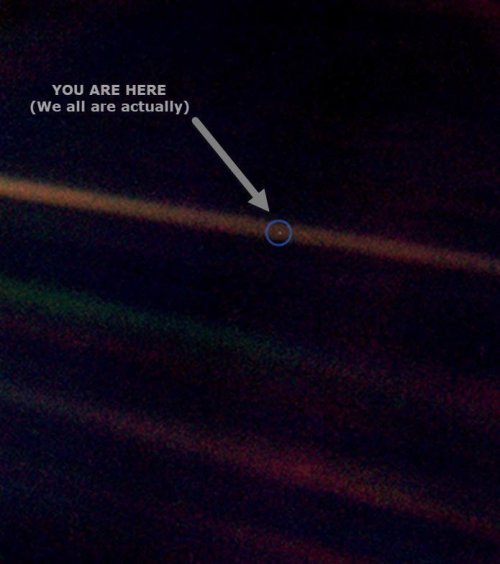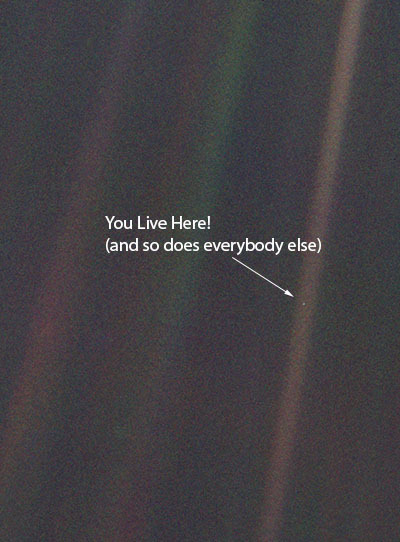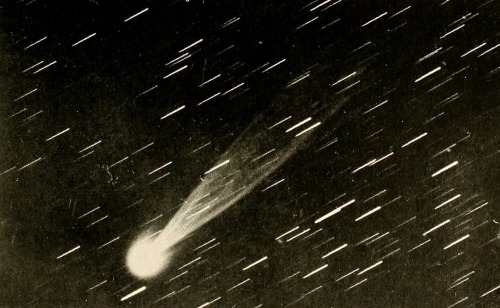NATIVE CARBON DIOXIDE FOUND ON JUPITER’S MOON EUROPA
NATIVE CARBON DIOXIDE FOUND ON JUPITER’S MOON EUROPA

More Posts from Ad-astra-affecte-spe and Others

Earth as seen through Saturn's ring(Cassini)

The red planet. Presidential design awards 2000.
Internet Archive

2024 January 7
The Cat’s Eye Nebula in Optical and X-ray Image Credit: NASA, ESA, Hubble Legacy Archive; Chandra X-ray Obs.; Processing & Copyright: Rudy Pohl
Explanation: To some it looks like a cat’s eye. To others, perhaps like a giant cosmic conch shell. It is actually one of the brightest and most highly detailed planetary nebula known, composed of gas expelled in the brief yet glorious phase near the end of life of a Sun-like star. This nebula’s dying central star may have produced the outer circular concentric shells by shrugging off outer layers in a series of regular convulsions. The formation of the beautiful, complex-yet-symmetric inner structures, however, is not well understood. The featured image is a composite of a digitally sharpened Hubble Space Telescope image with X-ray light captured by the orbiting Chandra Observatory. The exquisite floating space statue spans over half a light-year across. Of course, gazing into this Cat’s Eye, humanity may well be seeing the fate of our sun, destined to enter its own planetary nebula phase of evolution … in about 5 billion years.
∞ Source: apod.nasa.gov/apod/ap240107.html






cancel your plans we’re thinking about the pale blue dot voyager pic tonight

Sagittarius dwarf irregular galaxy (sagDIG) © Hubble

November 12, 1980: Voyager 1 made its closest approach to Saturn, flying within 124,000 kilometers (77,000 miles) of the ringed planet.




A beginner’s star-book, an easy guide to the stars and to the astronomical uses of the opera-glass, the field-glass and the telescope, 1912

NASA’s Webb, Hubble Combine to Create Most Colorful View of Universe by James Webb Space Telescope
-
 astudyinimagination liked this · 2 weeks ago
astudyinimagination liked this · 2 weeks ago -
 thekneesofoldtrees liked this · 3 weeks ago
thekneesofoldtrees liked this · 3 weeks ago -
 love-loliqua liked this · 3 weeks ago
love-loliqua liked this · 3 weeks ago -
 portmanteaublerone reblogged this · 4 weeks ago
portmanteaublerone reblogged this · 4 weeks ago -
 similartendencies reblogged this · 1 month ago
similartendencies reblogged this · 1 month ago -
 similartendencies liked this · 1 month ago
similartendencies liked this · 1 month ago -
 pumpkinspice-unicorn reblogged this · 1 month ago
pumpkinspice-unicorn reblogged this · 1 month ago -
 yourmoonmomma reblogged this · 1 month ago
yourmoonmomma reblogged this · 1 month ago -
 yourmoonmomma liked this · 1 month ago
yourmoonmomma liked this · 1 month ago -
 moonsyrin liked this · 1 month ago
moonsyrin liked this · 1 month ago -
 catt-crossing reblogged this · 1 month ago
catt-crossing reblogged this · 1 month ago -
 strawberriandromeda reblogged this · 1 month ago
strawberriandromeda reblogged this · 1 month ago -
 immunetogloom liked this · 1 month ago
immunetogloom liked this · 1 month ago -
 nonbarbari liked this · 1 month ago
nonbarbari liked this · 1 month ago -
 tyrannosaurus-maximus reblogged this · 1 month ago
tyrannosaurus-maximus reblogged this · 1 month ago -
 tyrannosaurus-maximus liked this · 1 month ago
tyrannosaurus-maximus liked this · 1 month ago -
 sandyswarms liked this · 1 month ago
sandyswarms liked this · 1 month ago -
 tf2fan459 reblogged this · 1 month ago
tf2fan459 reblogged this · 1 month ago -
 lemon-snake liked this · 1 month ago
lemon-snake liked this · 1 month ago -
 ambergerrosy liked this · 1 month ago
ambergerrosy liked this · 1 month ago -
 land-of-frogs-and-dragons reblogged this · 1 month ago
land-of-frogs-and-dragons reblogged this · 1 month ago -
 lovitdesele reblogged this · 1 month ago
lovitdesele reblogged this · 1 month ago -
 im-with-you-till-page-394 reblogged this · 1 month ago
im-with-you-till-page-394 reblogged this · 1 month ago -
 gentlynibbledonclitoris reblogged this · 1 month ago
gentlynibbledonclitoris reblogged this · 1 month ago -
 zelderina reblogged this · 1 month ago
zelderina reblogged this · 1 month ago -
 set-ssnn liked this · 1 month ago
set-ssnn liked this · 1 month ago -
 knifecrow liked this · 1 month ago
knifecrow liked this · 1 month ago -
 morasyframbuesas liked this · 2 months ago
morasyframbuesas liked this · 2 months ago -
 grievingangelhopefuldemon reblogged this · 2 months ago
grievingangelhopefuldemon reblogged this · 2 months ago -
 whitetiger94things reblogged this · 2 months ago
whitetiger94things reblogged this · 2 months ago -
 hanamarusprinkles liked this · 2 months ago
hanamarusprinkles liked this · 2 months ago -
 iiphides reblogged this · 2 months ago
iiphides reblogged this · 2 months ago -
 spidori reblogged this · 2 months ago
spidori reblogged this · 2 months ago -
 valisart reblogged this · 2 months ago
valisart reblogged this · 2 months ago -
 fireladyofink reblogged this · 2 months ago
fireladyofink reblogged this · 2 months ago -
 fireladyofink liked this · 2 months ago
fireladyofink liked this · 2 months ago -
 dolphin0142 liked this · 2 months ago
dolphin0142 liked this · 2 months ago -
 girldickman reblogged this · 2 months ago
girldickman reblogged this · 2 months ago -
 thelasernannyban reblogged this · 2 months ago
thelasernannyban reblogged this · 2 months ago -
 puppetmaster13u liked this · 2 months ago
puppetmaster13u liked this · 2 months ago -
 cleavingtolilac reblogged this · 2 months ago
cleavingtolilac reblogged this · 2 months ago -
 serelyly-hikari reblogged this · 2 months ago
serelyly-hikari reblogged this · 2 months ago -
 serelyly-hikari liked this · 2 months ago
serelyly-hikari liked this · 2 months ago -
 mielyoro liked this · 2 months ago
mielyoro liked this · 2 months ago -
 head-scritches reblogged this · 2 months ago
head-scritches reblogged this · 2 months ago -
 einsteinspencil reblogged this · 2 months ago
einsteinspencil reblogged this · 2 months ago -
 cleaning-my-stained-glasses reblogged this · 2 months ago
cleaning-my-stained-glasses reblogged this · 2 months ago -
 ginandroses liked this · 2 months ago
ginandroses liked this · 2 months ago

★•Astronomy, Physics, and Aerospace•★ Original and Reblogged Content curated by a NASA Solar System Ambassador
204 posts



